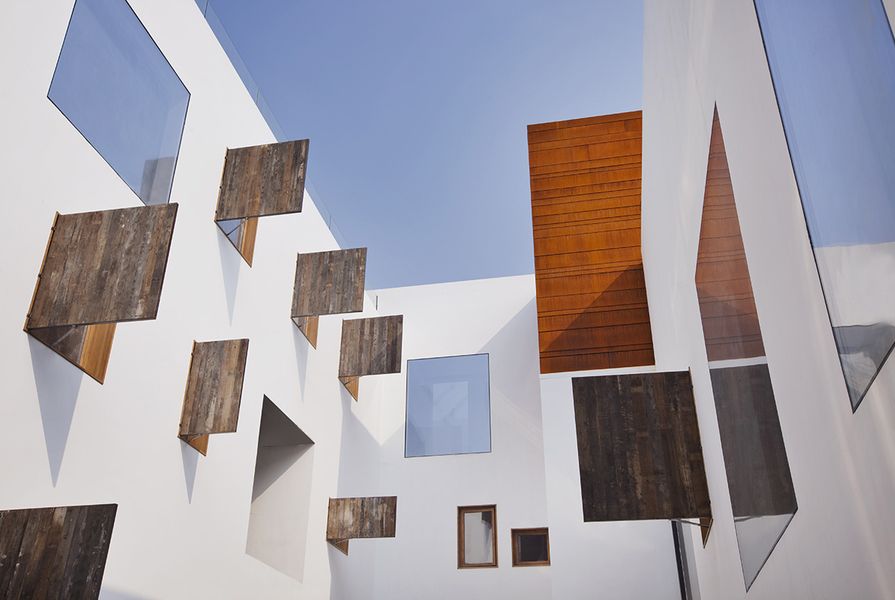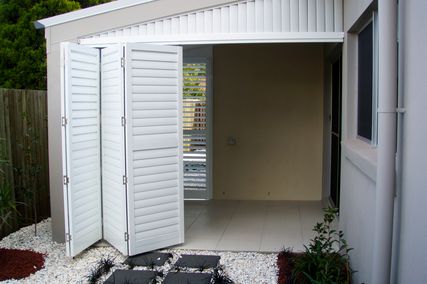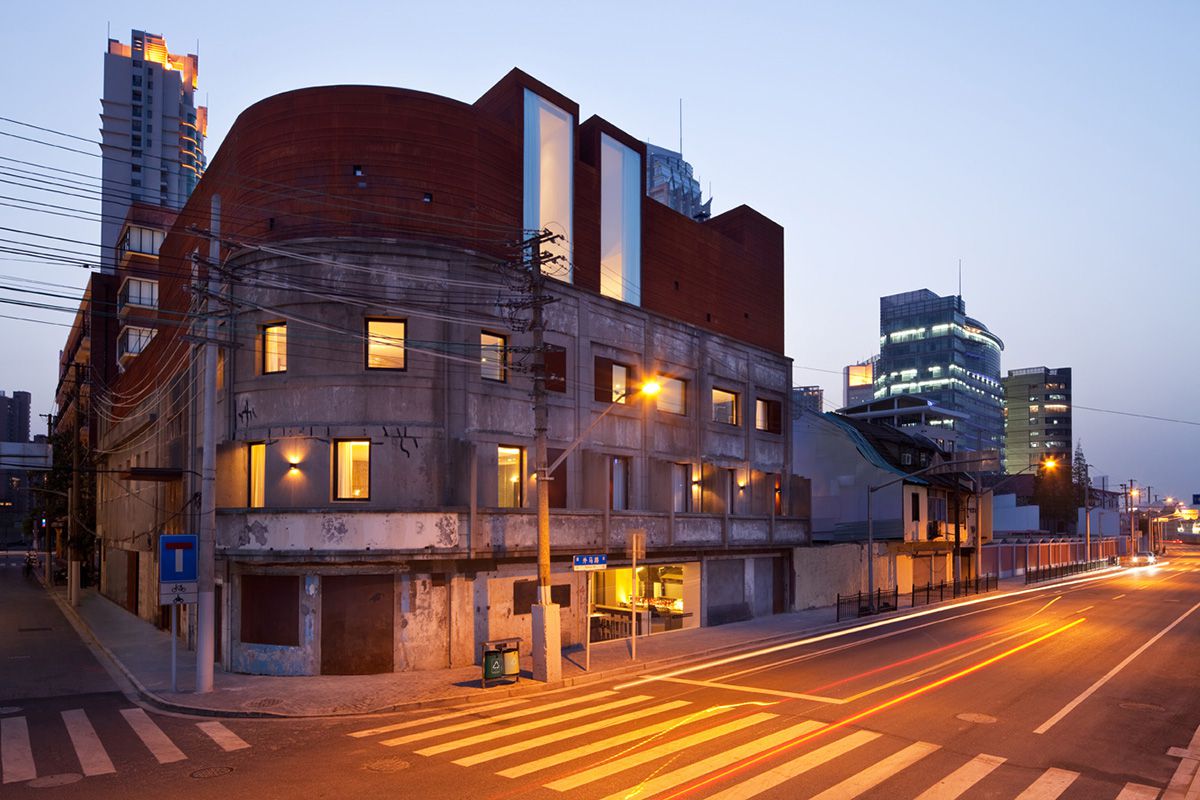Rowena Hockin: I wanted to talk about the nature of architecture in China at the moment, the volume of work there, and the absolute ‘placeless-ness’ of some of the developments – the lack of restraint in them. How do you position yourselves within that context?

Lyndon Neri (Neri & Hu), in Perth as a guest speaker at Making 2014.
Image: Peter Bennetts
Lyndon Neri: It is very hard. First, we turn down a lot of projects. We turn down close to forty projects a month – that is how crazy it is. The sad thing is, as soon as we turn it down they go to the next person and that person will take it. People need to be educated. That’s why we created a centre called the Design Commune, a design platform. It’s not just for architects, it’s actually for developers as well, in the form of a platform to come in and be educated about what is out there and how long it takes to build.
Often owners do not understand the process of making buildings, but they do understand the process of making a chair. They understand, “I have to wait sixteen weeks for this chair to be manufactured,” so within that understanding on a very small object, they start to hopefully understand the bigger picture; that buildings, like furniture, need design time and need manufacturing time. When the chair is crappy, people immediately know. Sometimes it takes years before you see that the building is deteriorating. But when a chair is bad they experience it instantly – within a week the leg breaks, for instance, if it’s badly made.
I believe my first six months in China helped me understand the mindset. I am Chinese, but having been educated in the West it took me a while to understand what it is to not ask for permission, but to ask for forgiveness. What it is to have the hierarchy in place. What it is to have face in the Chinese mindset. All these add up to the making of things.
David Chipperfield saw our project Design Republic, the retail store, and went to Waterhouse and said, “Wow, how do you manage to make it so well made? Do you have people on the site?” “Yes we do, but it’s not just that.” “Do you have to berate the client?” That’s part of it. But a lot of it is understanding all these different factors.
View across Shanghai’s Pudong skyline from the Waterhouse Hotel rooftop.
Image: Courtesy Design Hotels
RH: How it all works, how it all connects…
LN: Yes. So we created the Design Commune platform – it is a manifesto within the Chinese community, for the developers to better understand the design community. And for the design community to understand that copying is wrong. Also, a chance for those who do not have the opportunity to go out to the western world to see a glimpse of things that are done with quality, and for the West to come in. This became a mediation, a place, a platform.
RH: And what has been the uptake by developers?
LN: They like it. “Oh you have a restaurant, you have a one-room hotel” – they understand in terms of program. Not really in terms of how beautiful it is, that’s our aesthetic concern, but to them, the restaurant’s livelihood, that means revenue. “I could bring my friends and boast about it, this one-room hotel…” There is a little museum up above, there are retail stores, there is activity. To them those things are program and then they come to you and go, “We want this as well.” Well, if you want it then you have to be comfortable about the detailing, you need to spend this money to get this quality. You need to give me time, and that’s how we resolve this.
RH: You work with existing fabric in projects that might otherwise be proposed for demolition and new building. How do you convince the client in those circumstances that this is going to be worthwhile?
LN: Very hard. I have a project in Zhengzhou right now, a beautiful apartment with beautiful circular warehouse silos. Absolutely beautiful. I tried and tried to persist but they demolished it, and it’s very unfortunate. So I had to respectfully decline after that, and they just don’t understand. So they went and left that site and found another site for me.
RH: Now they’ve destroyed the trust in a way too…
LN: In many ways, yes, but it is a relationship. I was really moved by what Jo Noero said – the whole notion of “public-ness.” I said to my partner it’s about time we worked on social housing. Because we work in projects that make money, so a developer comes in and wants to give us a show flat. Initially we used to do that. Now we’re actually doing the show flat and we’re turning it into something else. I was going to show a project today that was a show flat for a development. There was the money for the show flat. So I told one of the biggest developers in China that I will do it. If you want to put the money in, I will do it. And I turned it into a library. The head of the development team was so moved. Seeing all the kids reading books. They see that this is a program that is worth giving back to the community. So that was supposed to be a six-month temporary project, now it’s permanent. They came in, bought the book budget and said let’s make this bigger. This Library. And so with that, we are constantly investing in how to be more public.
RH: A lot of your work is to do with the tourist interface, and creating this new use for buildings…
LN: So when the traveller comes, and the Chinese government starts seeing how popular Design Commune is, how popular the Waterhouse is, to them there is revenue associated with it. All of a sudden all the old buildings, their earthiness…
Shanghai’s Waterhouse Hotel by Neri & Hu retains its 1930s facade.
Image: Courtesy Design Hotels
RH: …it has value? I was going to ask you about tourism as a means of preserving culture…
LN: It’s a poignant question. We are one of the architects in the Greek Biennale Pavilion curated by Yannis Aesopos and it’s a notion of tourism. It’s a very interesting thing. Because Greece, having a hard time, what they did was sponsor flights for Chinese to come into Greece, to get married there… your expenses paid for, your flight paid for, your honeymoon paid for. Three days you stay in Mykonos, you see all these beautiful things. It might sound silly but it’s a three-year program, and it makes sense, because when you are romantically linked with someone, Greece becomes, “This is where I got married.” So the Chinese are prideful, they go back every year as a way to reaffirm their commitment perhaps, but at the same time they are spending money.
RH: How do you filter all the inputs that you have, and all the outputs?
LN: With a lot of research. We have research before a project starts, research within a project, research post, research after the project, and a documentation of all the research.
RH: What is the research that you conduct after a project?
LN: The research is basically we would go back every two months and say are some of our analysis or initial ideas correct? Because when we do another hotel we need to understand whether our fascination with this whole notion of travellers as opposed to tourists, the blurring of the public and the private, the idea of old and new, is it really resonating? Is it making them travel and be more curious about Shanghai, or is it just a pedagogical academic self-indulgence?
RH: You studied in the US, you’ve come back to China, you have really re-embraced the Chinese heritage and culture, which as you say has always been there but you’ve rediscovered it. Now that you are working in other contexts, in other geographical locations, what do you bring to them from this?
LN: A few things. And it’s also a reality. Now China is becoming more powerful. Just like America was thirty or forty years ago, and naturally just from a business point of view, all these developers, or even brands, there will be a day where they are starting to go, “Let’s have a Chinese voice.” I certainly want that Chinese voice to be responsible. What do I bring? A sense of community, a sense of sharing, because even during the cultural revolution, that idea of family is very important and it affects the space, the idea of public space is important.
RH: It’s things like this the west has lost, making things more communal and making things more public and creating better public spaces…
LN: To go from Europe, America destroyed a lot of that communal aspect.
RH: And Australia has taken a lot from America.
LN: The idea of suburbia, the idea of having a fence, the idea of having a garden right in front of you, the notion that if you drive longer that means you’re wealthy, is to me just sickening. The idea that the backyard, that actually should be used as a convivial space, all of a sudden a half or a third of that is lawn which you have to constantly water! I just don’t get it. And Jo Noero said something which was interesting when he said that the Chinese are investing into Africa with a clear sense of responsibility. There is a Chinese saying that if you want to be part of that land you’ve got to invest back into the land, so it is about giving it back.
Making 2014 was presented by the Australian Institute of Architects.
























